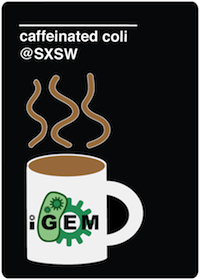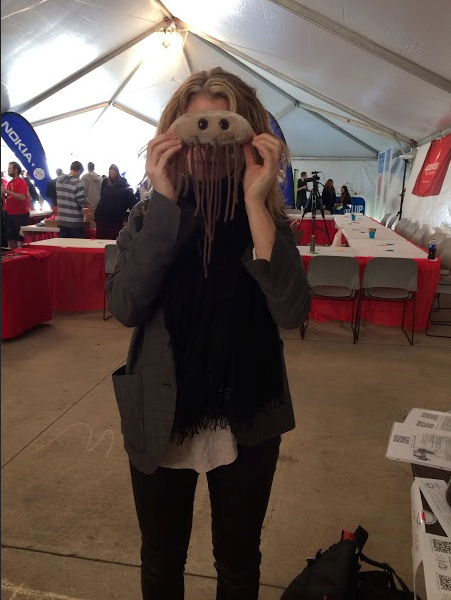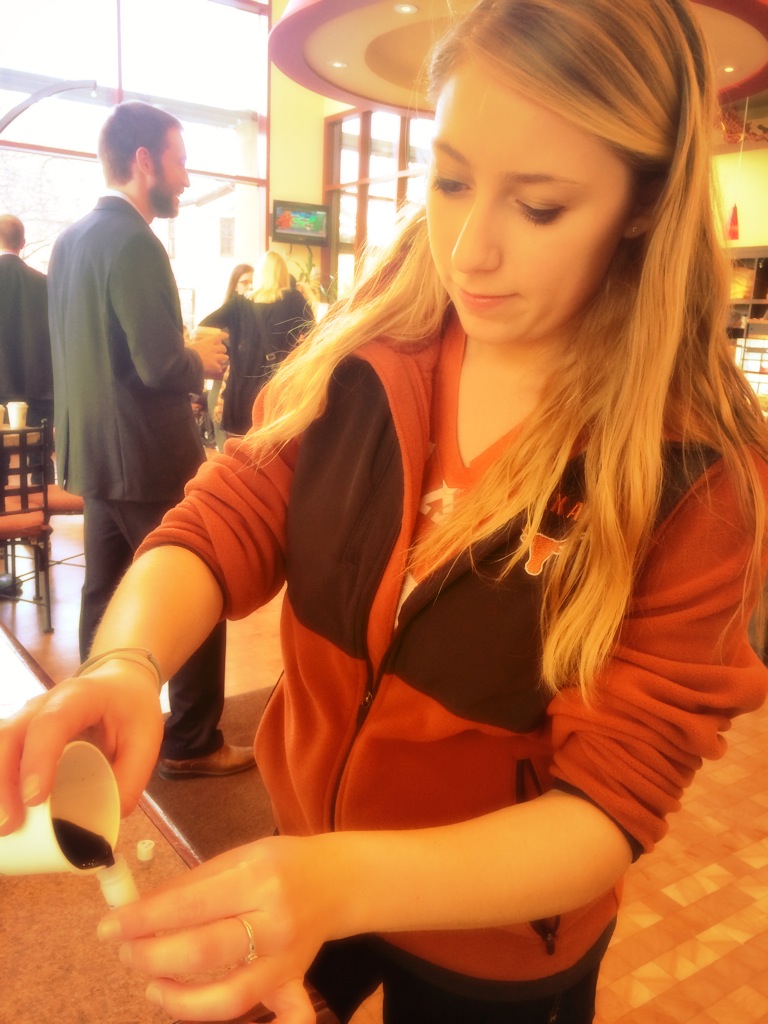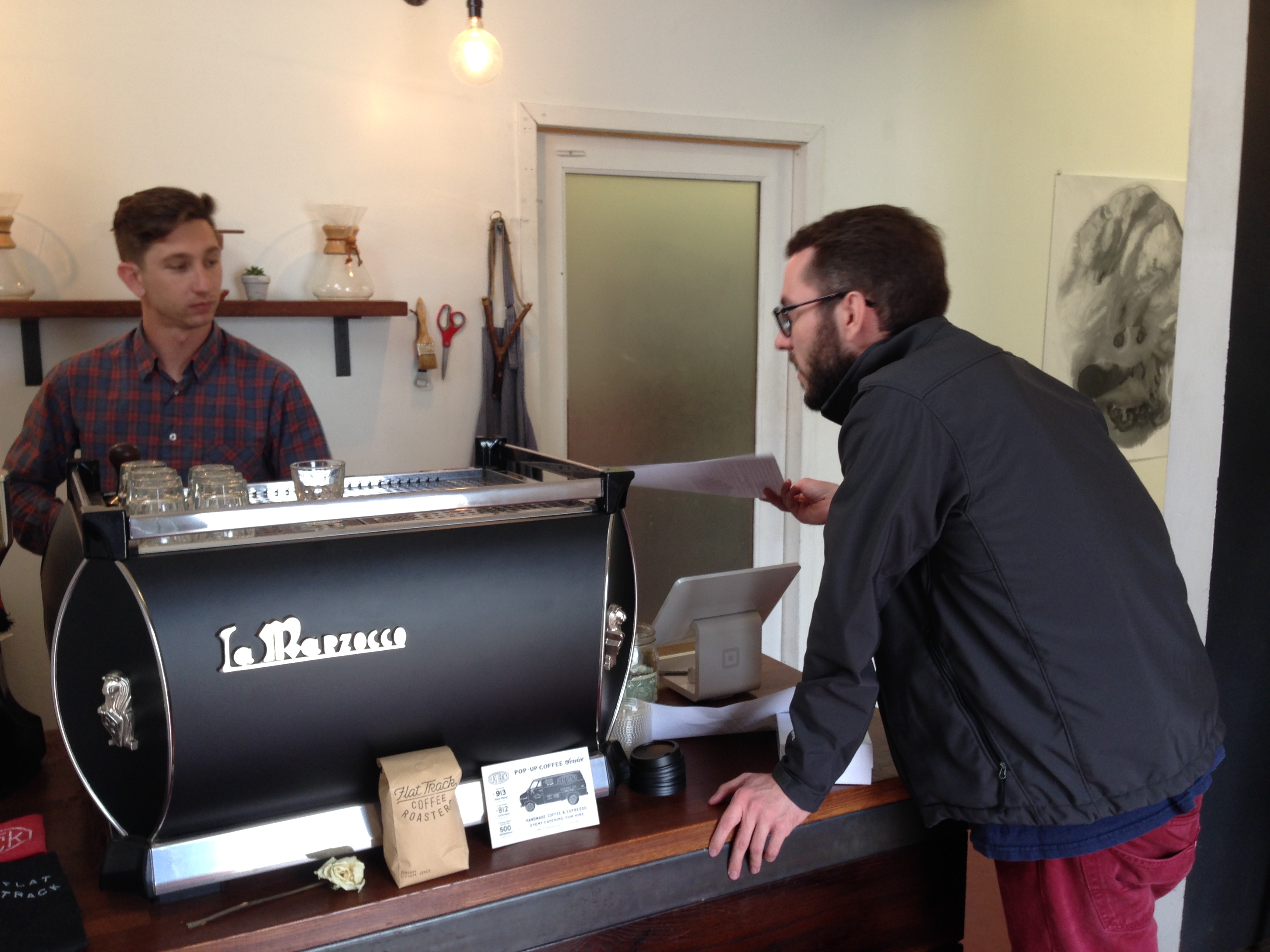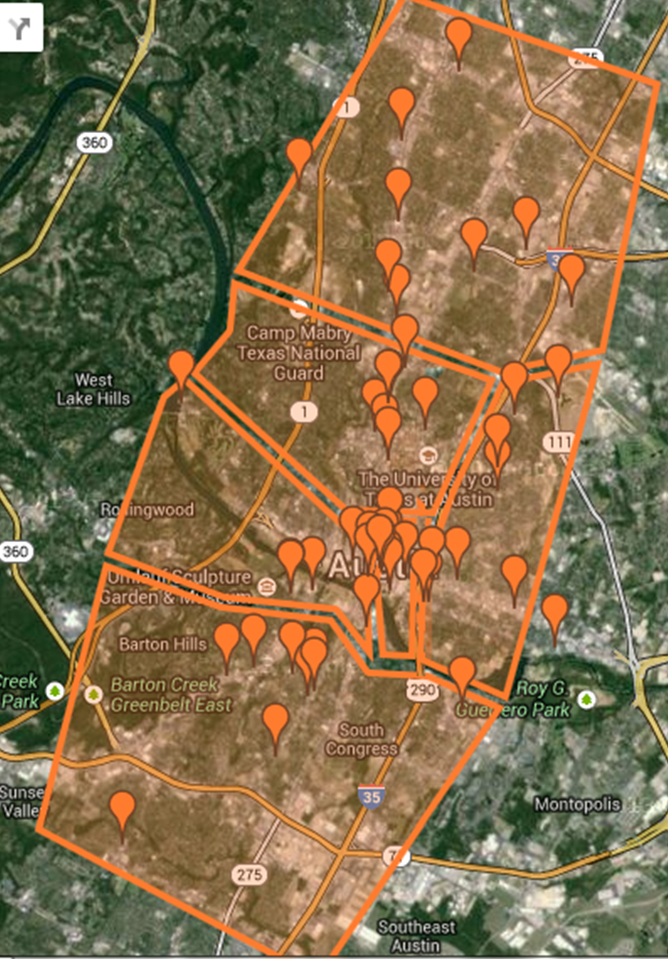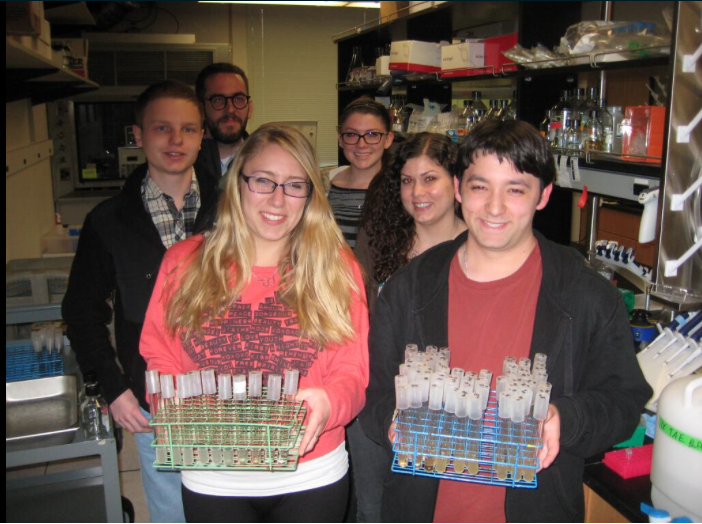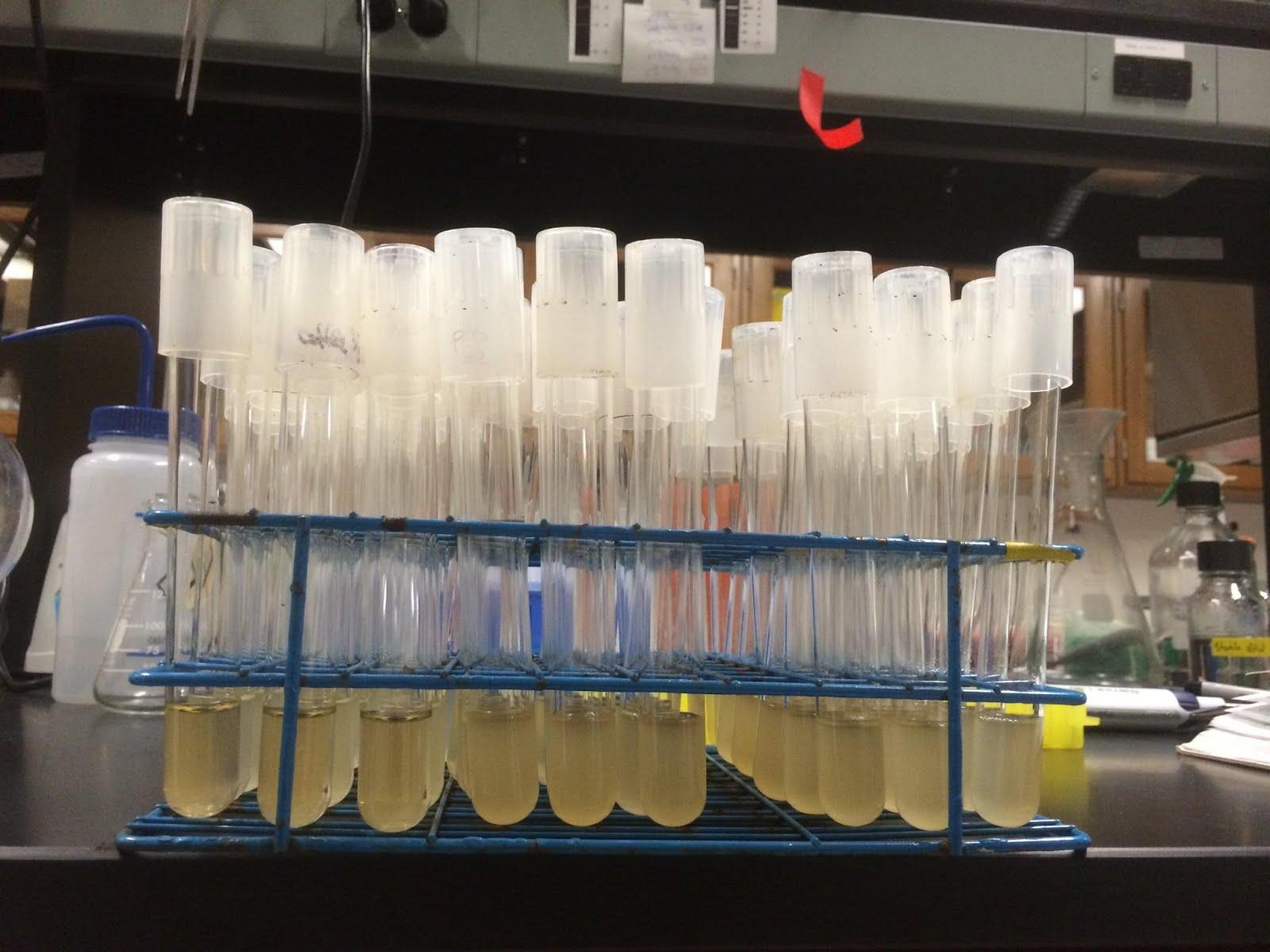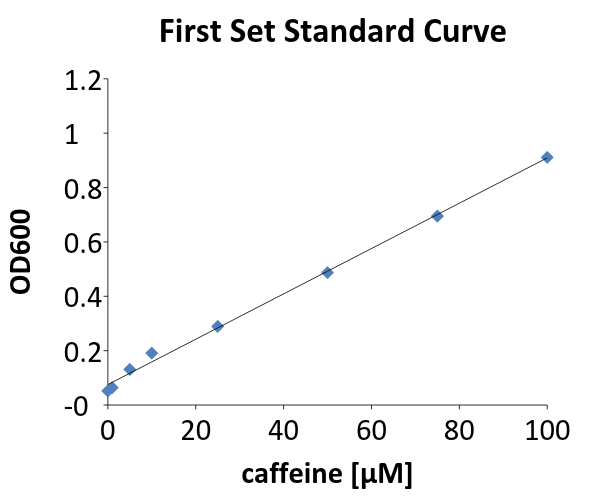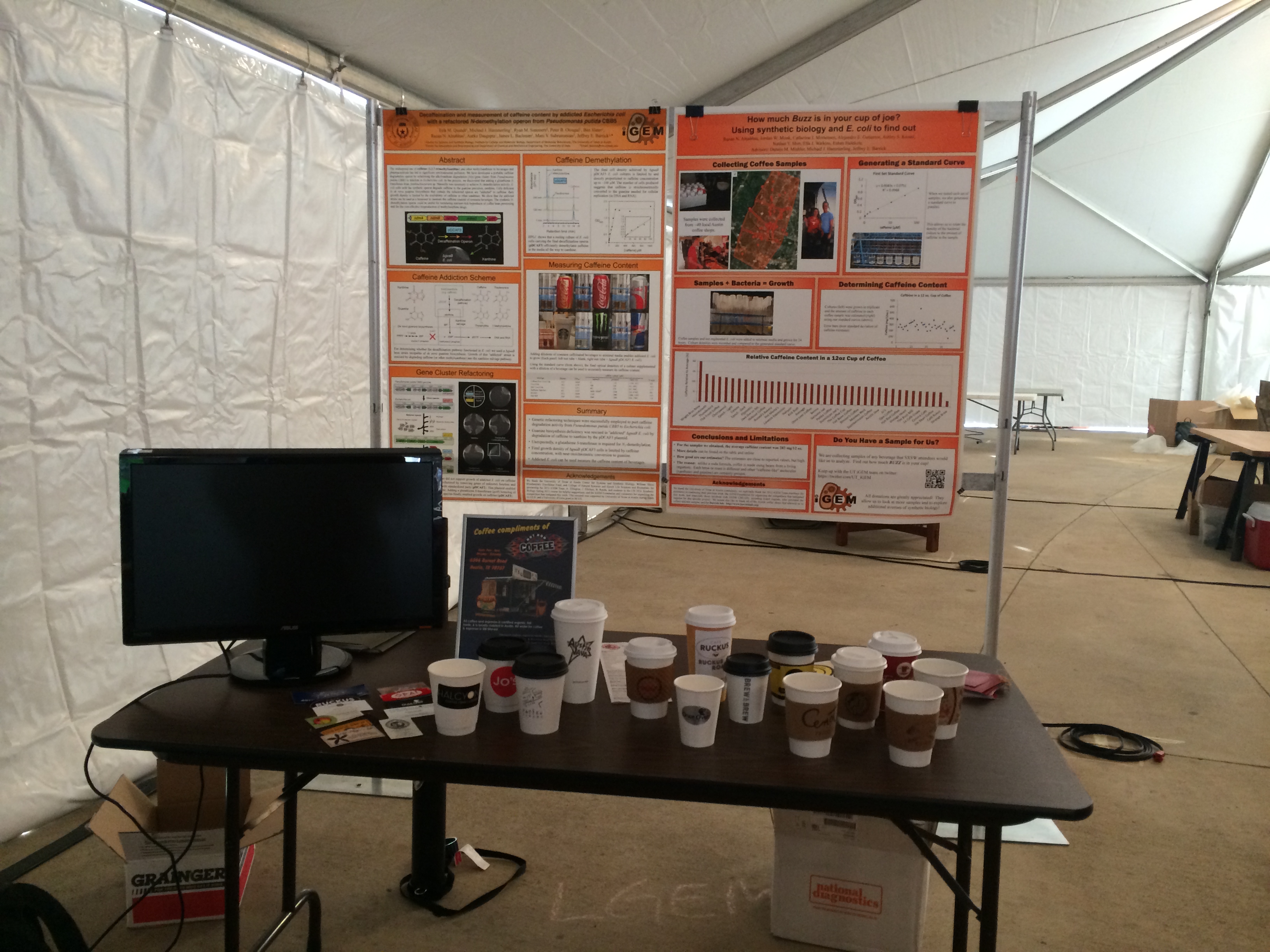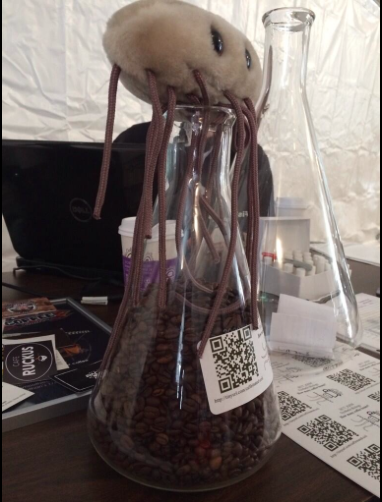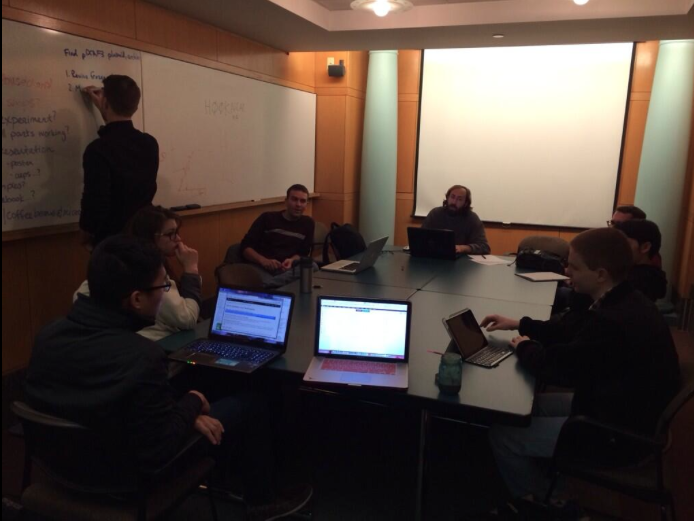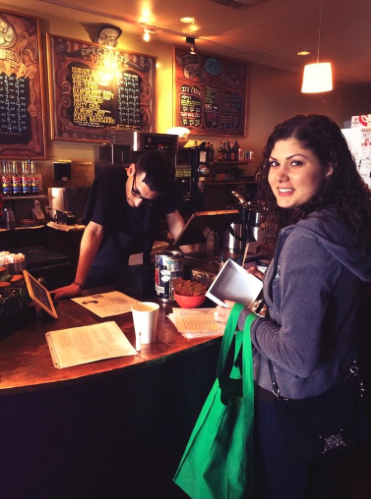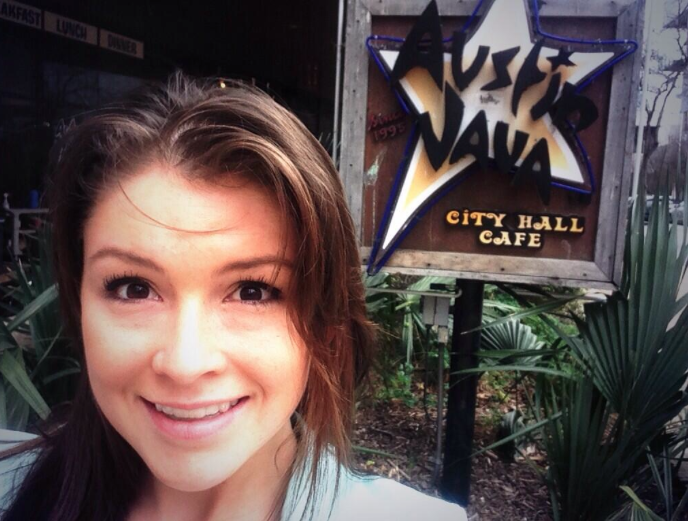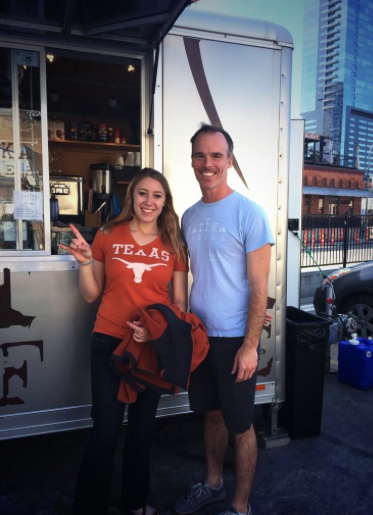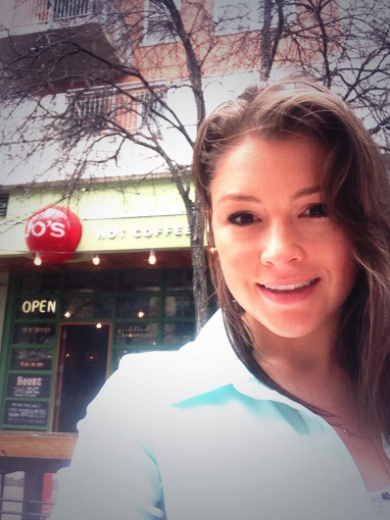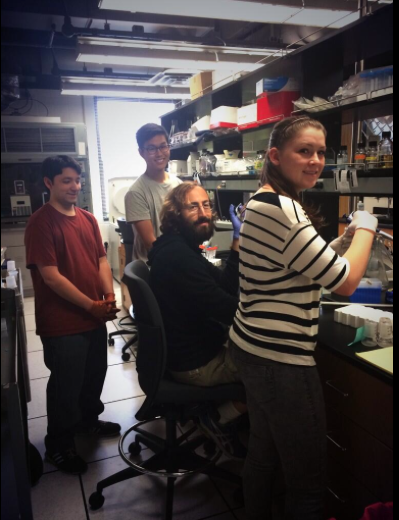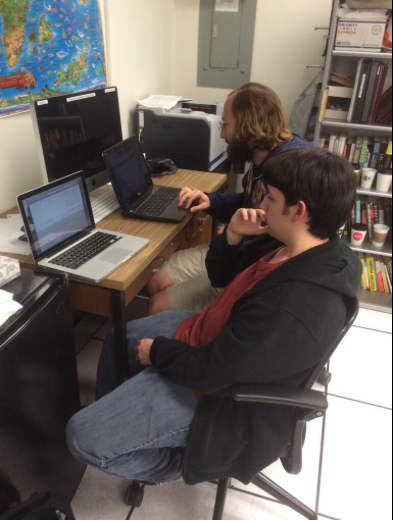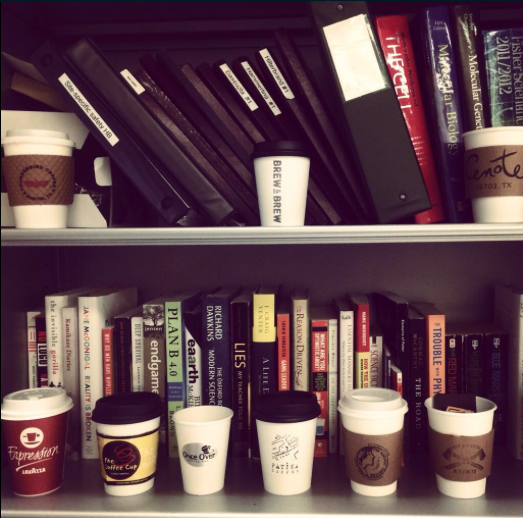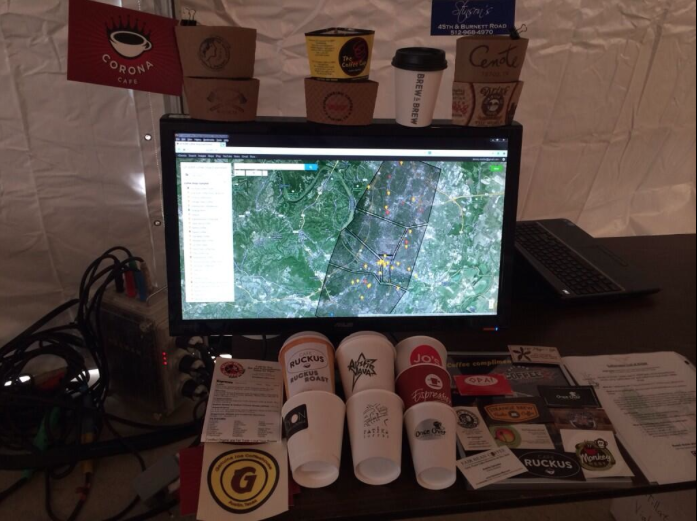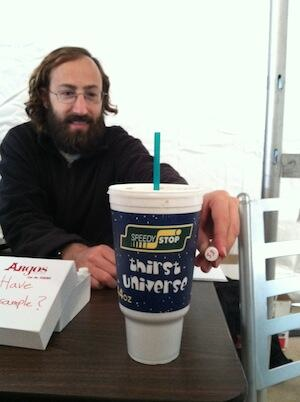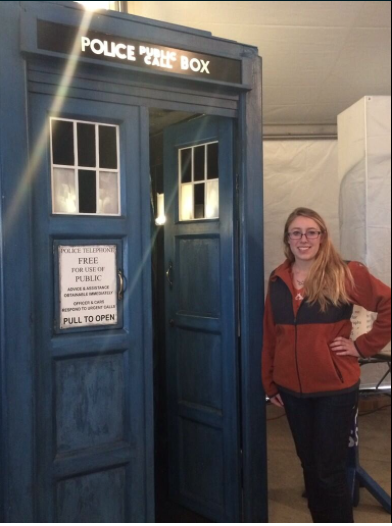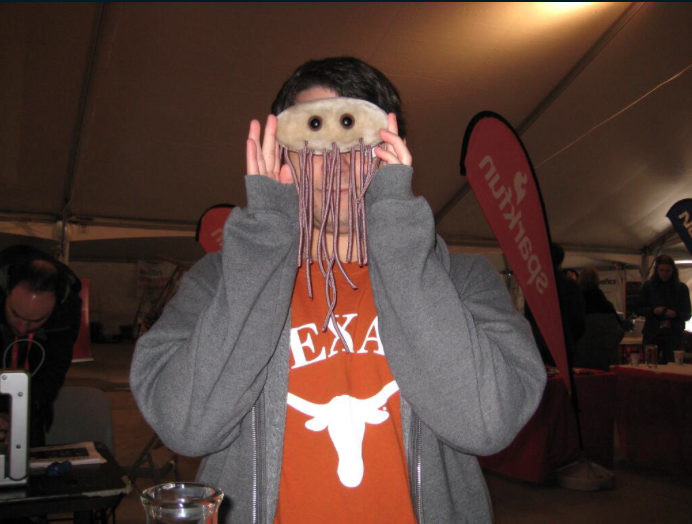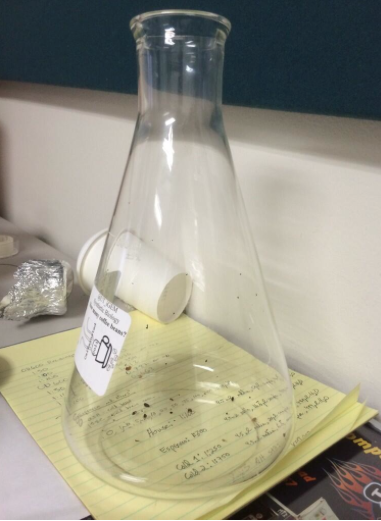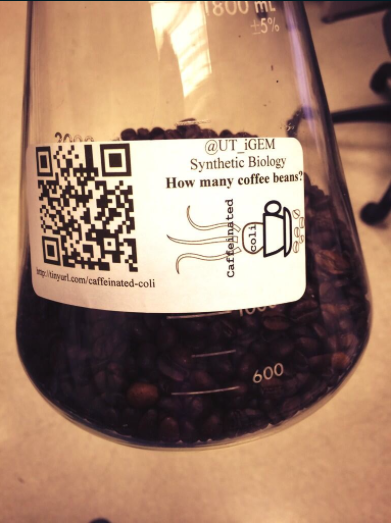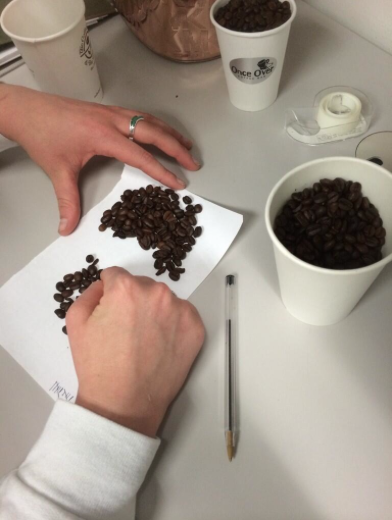Team:Austin Texas/human practices
From 2014.igem.org
| (One intermediate revision not shown) | |||
| Line 130: | Line 130: | ||
[[file:UT_Austin_relative_caffeine_levels_coffee_shops.png|950px|thumb|center| '''Figure 1.''' Relative levels of caffeine in house coffee samples from around Austin. Data depict the amount of caffeine in the coffee relative to the average caffeine content for all samples tested, as determined using the Caffeinated Coli.]] | [[file:UT_Austin_relative_caffeine_levels_coffee_shops.png|950px|thumb|center| '''Figure 1.''' Relative levels of caffeine in house coffee samples from around Austin. Data depict the amount of caffeine in the coffee relative to the average caffeine content for all samples tested, as determined using the Caffeinated Coli.]] | ||
| - | + | <h1>Presenting the Science</h1> | |
In March 2014, we presented this data set at the SXSW festival. As part of this outreach, we explained our project and synthetic biology to a wide range of people. Many people who came by had little to no background in science or technology, and those who did did not have a thorough understanding of what synthetic biology was or how it could be helpful. By discussing our experiments with bacteria and coffee, an interesting and easy-to-understand application, we were able to explain the basic concepts of synthetic biology and how it can be used in a beneficial way. Occasionally, these conversations would branch out into wider topics of science and technology. We feel this is a far better way for the public to learn about synthetic biology than from rumors about GMOs. | In March 2014, we presented this data set at the SXSW festival. As part of this outreach, we explained our project and synthetic biology to a wide range of people. Many people who came by had little to no background in science or technology, and those who did did not have a thorough understanding of what synthetic biology was or how it could be helpful. By discussing our experiments with bacteria and coffee, an interesting and easy-to-understand application, we were able to explain the basic concepts of synthetic biology and how it can be used in a beneficial way. Occasionally, these conversations would branch out into wider topics of science and technology. We feel this is a far better way for the public to learn about synthetic biology than from rumors about GMOs. | ||
| - | + | <h2>Community Response</h2> | |
[[file:SXSWcreatetable.JPG|left|400px|thumb| Table at SXSW]] | [[file:SXSWcreatetable.JPG|left|400px|thumb| Table at SXSW]] | ||
| Line 142: | Line 142: | ||
| - | [[file:e.coliplush.png|thumb|right| Coffee bean counting contest]] | + | [[file:e.coliplush.png|thumb|250px|right| Coffee bean counting contest]] |
People were also extremely curious as to why the Wright Bros. Brew & Brew sample had a significantly higher amount of caffeine. This data point resulted in one of the owners of Wright Bros. Brew & Brew contacting us to understand our process of determining caffeine content and why they were so far outside the mean. The owner, Matt Wright, concluded, after discussing our project and the coffee brewing process (and consulting with employees), that the specific pot of coffee was probably just not fully drained, i.e. there was less water in the batch than normal, resulting in a higher caffeine per volume content. This was just a starting point though, as the conversation with Mr. Wright spanned the entire process of making coffee, quality control, and a little bit of the science behind the process. It also developed a nice contact point for a future continuation of science and coffee. | People were also extremely curious as to why the Wright Bros. Brew & Brew sample had a significantly higher amount of caffeine. This data point resulted in one of the owners of Wright Bros. Brew & Brew contacting us to understand our process of determining caffeine content and why they were so far outside the mean. The owner, Matt Wright, concluded, after discussing our project and the coffee brewing process (and consulting with employees), that the specific pot of coffee was probably just not fully drained, i.e. there was less water in the batch than normal, resulting in a higher caffeine per volume content. This was just a starting point though, as the conversation with Mr. Wright spanned the entire process of making coffee, quality control, and a little bit of the science behind the process. It also developed a nice contact point for a future continuation of science and coffee. | ||
| Line 153: | Line 153: | ||
To involve everyone attending the event and raise more awareness for the iGEM team, we held a contest in which patrons attending the event could enter to win an ''E. coli'' plush upon following us on [https://twitter.com/UT_iGEM Twitter]. | To involve everyone attending the event and raise more awareness for the iGEM team, we held a contest in which patrons attending the event could enter to win an ''E. coli'' plush upon following us on [https://twitter.com/UT_iGEM Twitter]. | ||
| - | + | <h2>Impact on Synthetic Biology</h2> | |
This community outreach project presented the team with an opportunity to dispel misoconceptions the public has about the field of syntetic biology and our work with genetically modified organisms. We worked to show people the benefits of GMOs, such as the application our caffeinated coli, which were originally created in 2012 with bioremediation in mind. By presenting the science in a fun and easily digestible manner, members of the general public could see synthetic biology in a new light. | This community outreach project presented the team with an opportunity to dispel misoconceptions the public has about the field of syntetic biology and our work with genetically modified organisms. We worked to show people the benefits of GMOs, such as the application our caffeinated coli, which were originally created in 2012 with bioremediation in mind. By presenting the science in a fun and easily digestible manner, members of the general public could see synthetic biology in a new light. | ||
The challenge of accurately detecting caffeine in biological products is fascinating, and we hope to further refine our methods in the future, as we cannot currently fully differentiate between caffeine and certain other xanthines. Hopefully, we will be able to reach out again next year and develop an even better synthetic biology application. | The challenge of accurately detecting caffeine in biological products is fascinating, and we hope to further refine our methods in the future, as we cannot currently fully differentiate between caffeine and certain other xanthines. Hopefully, we will be able to reach out again next year and develop an even better synthetic biology application. | ||
| - | + | <h2>SXSW Adventure in Photographs (hover over image for captions!)</h2> | |
[[file:Firstthinktanksession.png|left| 400px| First Think Tank Session!]] | [[file:Firstthinktanksession.png|left| 400px| First Think Tank Session!]] | ||
[[file: razancollectscoffee.png|right|400px|Razan collects coffee]] | [[file: razancollectscoffee.png|right|400px|Razan collects coffee]] | ||
Latest revision as of 01:13, 18 October 2014
| |||||||||||||||||||||||||||||
 "
"

